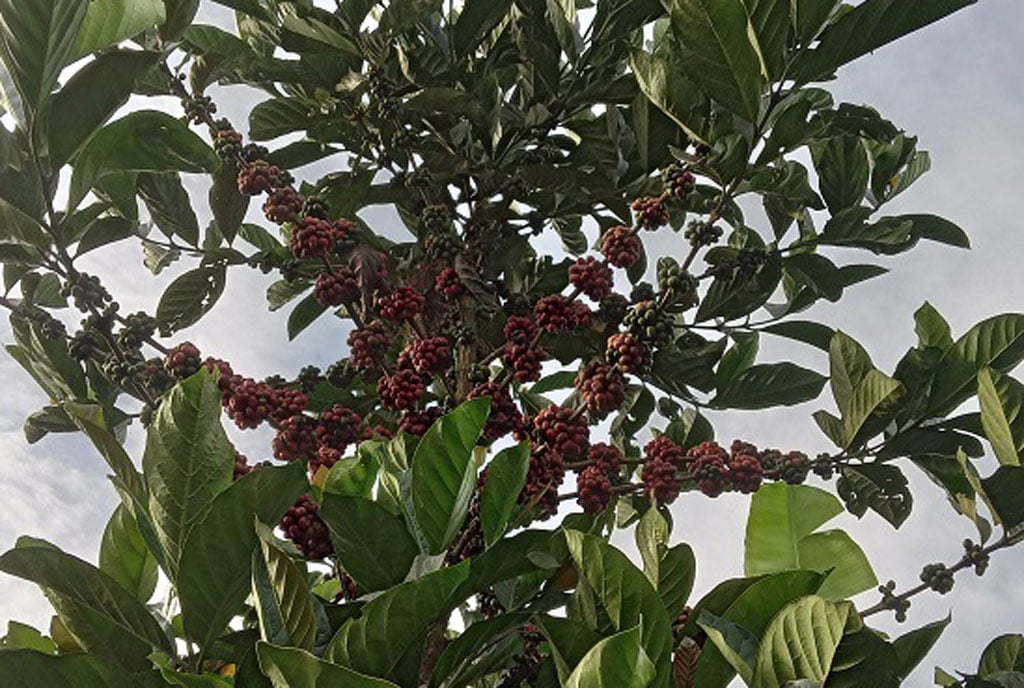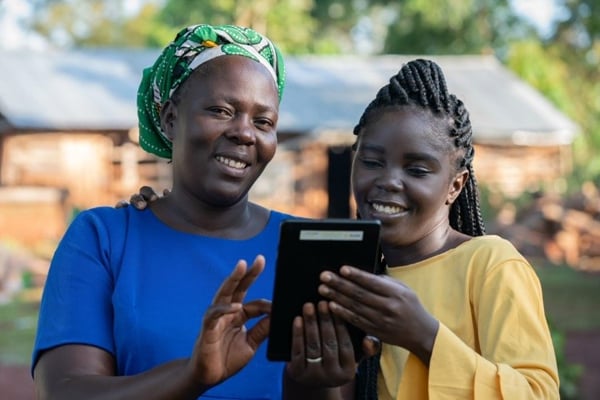Prime
Kisansa gives more cherries

High yield
According to the study report released in 2019, farmers growing it cited its conducive harvest time in the times of limited alternative income sources, excellent yields, and absolute resistance to pests and diseases especially coffee wilt disease and coffee leaf rust as the major factors for its preference.
What you need to know:
- Kisansa starts producing/flowering at about four years and the yields increase as the tree grows bigger.
At first sight, you may mistake it for a jackfruit tree. It is a giant tree, almost 10 meters high. It is inter-cropped with Robusta coffee.
However, this rare tree does not have jack fruits but coffee cherries. This is what I witnessed in Kigalama village, Kiganda Sub-County in Kassanda District.
According to research, this coffee variety is locally called Kisansa. Globally, it is known as Coffea liberica (Liberica). It is also well known as Excelsa coffee variety.
Unique variety
This coffee variety is unique and different from Robusta and Arabica. Kisansa is not yet recognised as a commercial crop in Uganda, but it has great potential to make money for farmers.
Edward Ntabaazi, a Robusta coffee farmer with a few Kisansa trees in Kigalama, says he likes ‘the new variety’ because it is rarely attacked by diseases and pests.
“My Robusta coffee trees are attacked by Coffee Wilt Disease and Black Coffee Twig Borer, but Kisansa has not been affected yet,” he says.
Agronomy
Ntabaazi reveals that Kisansa starts producing/flowering at about four years and the yields increase as the tree grows bigger.
Just like Robusta, he says, Kisansa requires good agronomic practices to get higher yields.
Study by UCDA
A study carried out by Uganda Coffee Development Authority (UCDA) and National Coffee Research Institute (NaCORI) in 2018 about Kisansa coffee, revealed that this coffee has a great potential to diversify the fortunes of the coffee sector in Uganda amidst climate change constraints, pest and disease challenges, decreasing soil fertility, low farmer productivity, as well as being a good source of genetic diversity for improved coffee variety selection.
According to the study report released in 2019, farmers growing it cited its conducive harvest time in the times of limited alternative income sources, excellent yields, and absolute resistance to pests and diseases especially coffee wilt disease and coffee leaf rust as the major factors for its preference.
The study was carried out in the districts of Butambala, Kamuli, Kyotera and Luweero in central Uganda and Arua, Moyo and Koboko in the west Nile region.
According to the study report, cupping of the samples was done by a panel of experts in a UCDA laboratory.
“The samples had a high average score of 80 percent with various special profile notes. Physical bean analysis showed that 59 percent of the analysed Coffea liberica (kisansa) coffee beans were screen 19,” reads in part the report.
Slow Food Uganda, an organisation focusing on preventing the disappearance of local food cultures and traditions, has been promoting Kisansa variety in Luwero and the Central region since 2015.
John Wanyu, the programmes officer-biodiversity protection at Slow Food Uganda, says Kisansa coffee is one of the traditional coffee varieties indigenous to Uganda. It is a ‘wild’ coffee tree in some of the natural forests in Uganda.
Maturity
According to Wanyu, Kisansa coffee starts producing at four years after planting. It is planted at a spacing of 20 by 20 metres.
“A properly grown Kisansa coffee tree (of 10 years and above) can yield 300 kilogrammes of red cherries per year,” Wanyu says, adding that Kisansa coffee does not compete with other plants.
Production
Slow Food is currently working with 41 farmers, who are producing between seven and twelve tonnes of pure Liberica/Kisansa per year.
Wanyu says the 41 farmers have since given out seedlings to other farmers who pick interest in this coffee variety.
However, this website understands that there are more farmers spread across the country with a few Kisansa coffee trees.
Wanyu confirms UCDA’s findings, noting that Kisansa is tolerant to most of the diseases affecting both Robusta and Arabica. He says it’s also tolerant to drought.
“It protects the eco-system. It’s a forest tree that is robust. It protects itself and other plants,” he says of the advantages of the Kisansa coffee besides its economic value.
Market
Wanyu says their farmers are selling the coffee as speciality coffee.
“There are companies buying Liberica/Kisansa coffee from farmers and selling it abroad,” Wanyu says.
He says countries such as Philippines are increasingly reaping big from Liberica as speciality coffee.
He adds that roasters in coffee drinking countries have already fallen in love with Liberica because of its cup quality.
“Its cup quality is lighter compared to Robusta. It is so drinkable,” he says.
It is understood that this coffee variety is on high demand in Italy, Sweden, Japan and other European countries.
Challenges
Wanyu says farmers still have limited knowledge about this coffee type. He adds that some farmers refer to it as a variety of Robusta and thus have been mixing it with Robusta.
“Farmers should separate Kisansa from Robusta during harvesting,” he says.
According to the UCDA report, demerits of growing the species included difficulties in harvesting due to the giant tree sizes and hard to pick cherries, as well as the lower prices offered by traders for the species.
High yield
According to the study report released in 2019, farmers growing it cited its conducive harvest time in the times of limited alternative income sources, excellent yields, and absolute resistance to pests and diseases especially coffee wilt disease and coffee leaf rust as the major factors for its preference.




